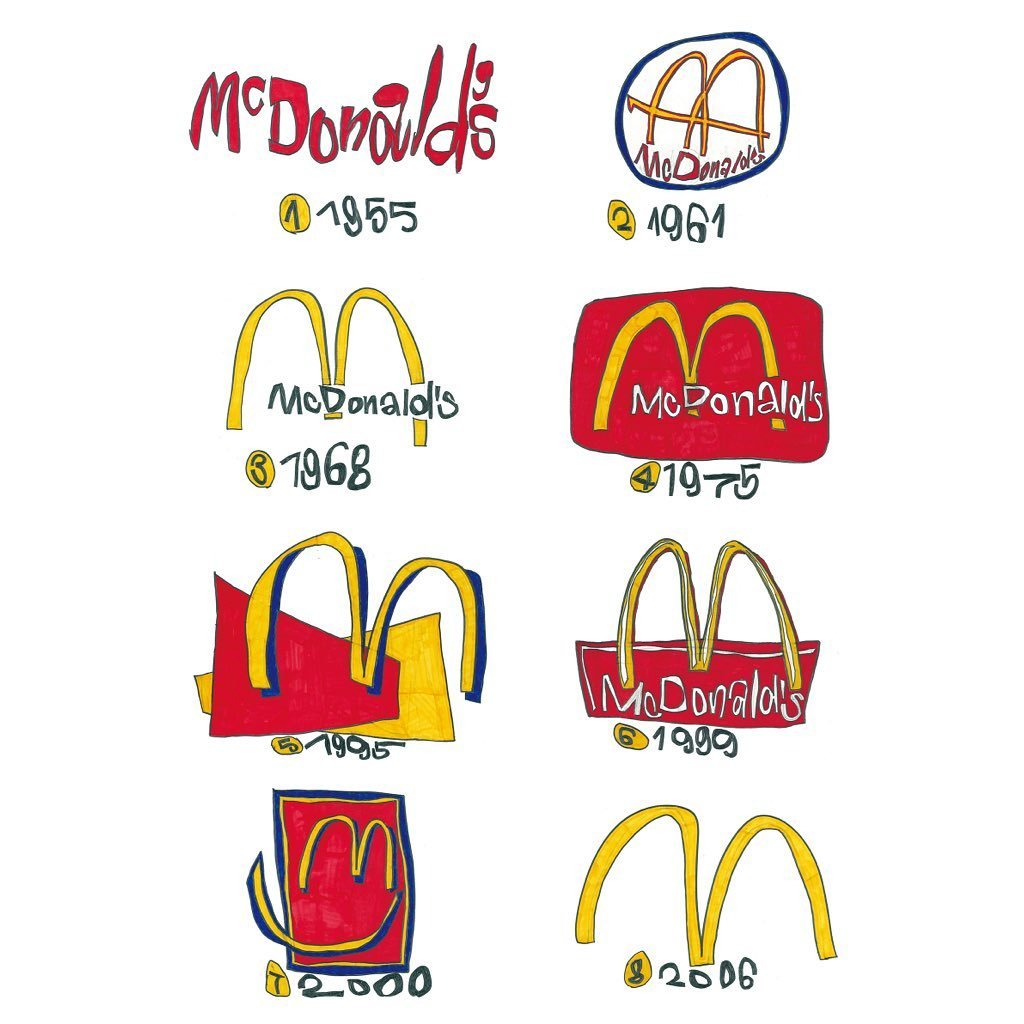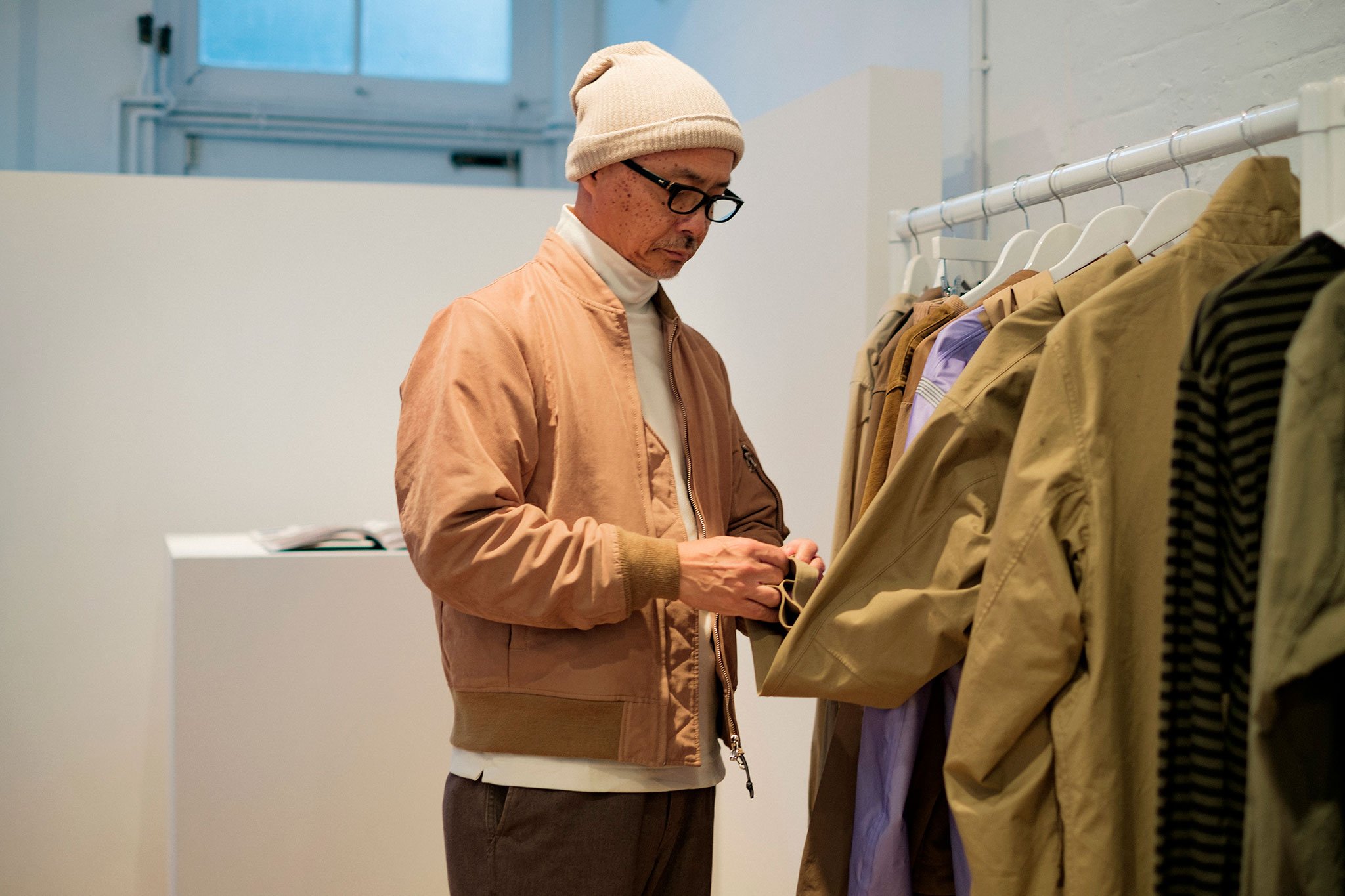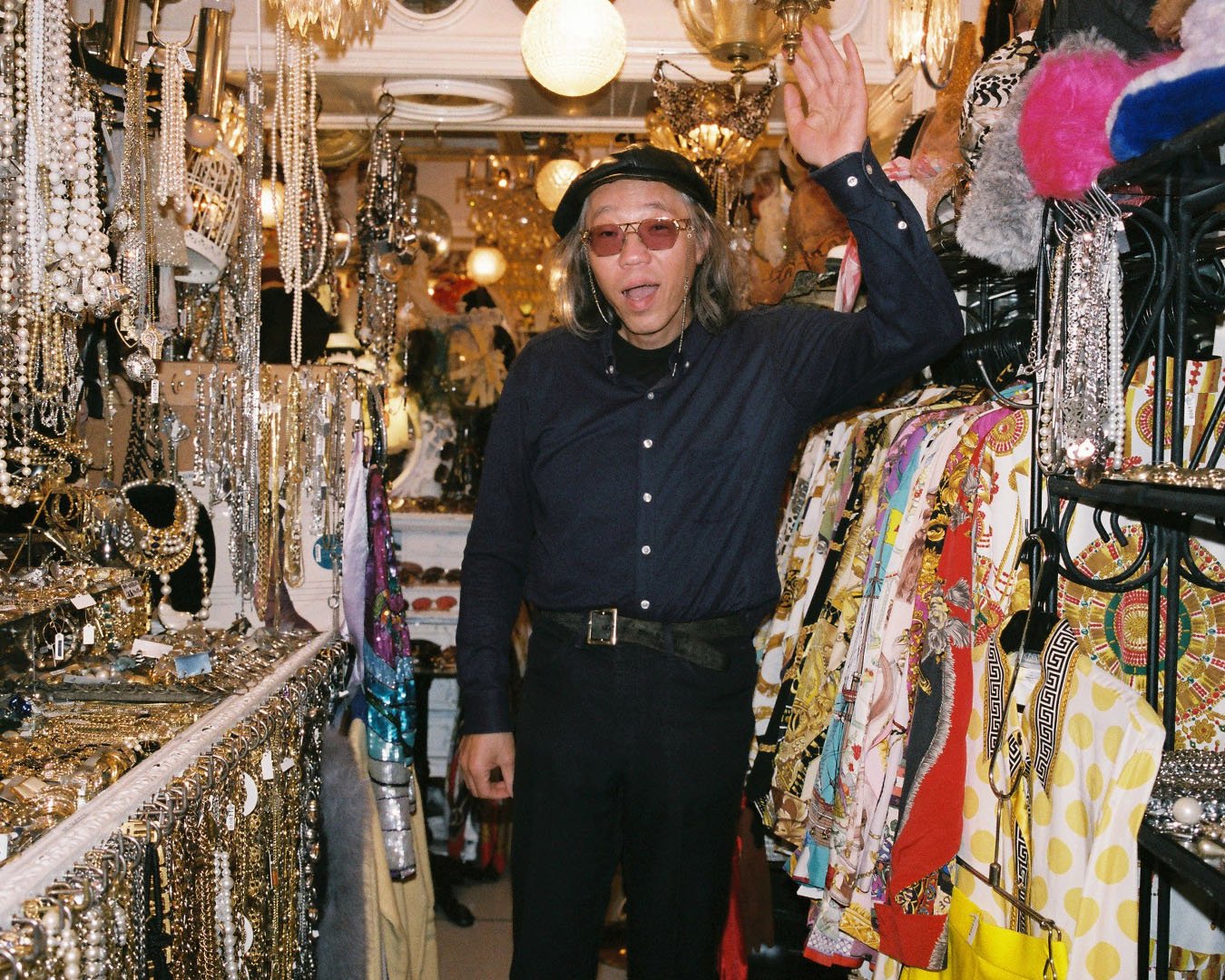Drawing Nostalgia: Meet Tokyo’s Rising Art Star Shohei Ochiai

Art is subjective; and most of us have probably learnt that in the most direct and painful way possible.
Whether your early creative endeavors in school were labelled an A + success or a massive failure, probably influenced how interested you’d be in the art for years to come. Dissected by a teacher who thought of themselves as Leonardo’s long lost cousin but whose skills were more alike to Squidwards “Bold and Brash”, your humble 6th grade self portrait either: got scrutinized in all sorts of ways, ultimately leading to the early demise of your once burgeoning artist career OR was praised as the next big deal in art [from your local middle school], kickstarting your passion in anything art related.
No matter which way your first art experience went, one thing becomes very apparent: Your teacher compared and ranked your masterpiece against a set of rather outdated and old-fashioned standards, sprinkled their very personal take into the grading and ultimately slapped an all-encompassing letter or number grade on your painting.
This process is still the golden standard in education today, and while its certainly difficult to restructure the grading process in art education, it opens the floor up to a wider discussion: How can you really determine the beauty of an artwork and why do we feel the need to compare it to some old-school golden standard? If we keep on applying this line of thought in determining the value of new art by comparing it against old fashioned troupes, wouldn’t that prohibit the birth of fresh, progressive and completely redefining art pieces?
Don’t get us wrong - we’re not holding any grudges against successful popular artists of previous or current generations. After all, they are the ones that have popularised the cultural discipline to a wider audience and continue to do so today. Nonetheless, seeing as how technology has progressed and opened up new ways to interpret and create art, we’re always more than excited to witness fresh takes that don’t feel overly exclusive and instead play on a shared memory or a common feeling of nostalgia while introducing their very own point of view.
One of these artists that have sent waves of excitement through the Sabukaru office in the more recent history is the Tokyo-based artist Ochiai Shohei. Growing up in a suburban town near Saitama, the up-and-coming artist originally set his sights on becoming a comedian. At the same time, he was heavily inspired by some of the great Japanese product designers at the time like Naoto Fukazawa [the mastermind behind MUJI’s packaging], pushing him to successfully enroll in the prestigious Tama Art University with a major in product design without ever having any real ambition of actually becoming a product designer.
Since his University days, Shohei has come a long way and upon laying your eyes on one of his illustrations for the first time, they might strike you as boyish, even unpolished - the complete opposite of a perfectly smooth egg-shell-colored MUJI tissue box. But that’s exactly where the beauty of his art lies: By simply focussing on painting what he likes, Shohei is challenging the status quo, a status quo that so far only allowed the most refined, polished and elegant artworks to soak up the spotlight.
Instead, Shohei’s art captures the viewer's mind by skillfully playing with a wider collective memory of objects that we held and still hold so close to our hearts - from Pokemon cards and a Gameboy all the way to a deck of UNO cards or the packaging of a Tomica car. But Shohei doesn’t stop there, instead he then proceeds to draw these items in a way that only he could, in a way that defines all laws of physics and depicts these nostalgic items with a youthfulness that matches our earliest memories of the drawn object. Where semi-realism meets honesty, Shohei Ochiai is a genius when it comes to depictions of familiarity.
One could argue that it is this punk-spirit that disrespects the laws of physics and low-key flips the bird at subtle and “oh-so-elegant-pastel” colour blocking that makes Shohei’s work so exciting, allowing it to stand out from the crowd. Shohei is part of a new generation of artists that isn’t afraid to do things in new ways, redefining rules with his deliberate style and most of all, thinking outside the high-border box that is traditional art. His bravery to explore the unbeaten path is quickly catching on with the local audience as evidenced by his exhibitions in reload Shimokitazawa or Daikanyama T-Site.
Built upon his uniquely humble but nonetheless extremely precise and time-consuming approach that has helped Shohei to organically amass a cult following in Japan, he is now setting his sights to taking over the art world beyond the island nation's borders. Featuring an easily accessible collection of globally recognizable items like a Moderna COVID shot or a Japanese train and paired with his personal style that would infuriate every traditional art professor, its only a matter of time until Shohei will capture the hearts and minds of the global art stage.
Check out our online store for a Sabukaru exclusive signed and numbered Print by Ochiai Shohei.
Without further ado, Sabukaru is honoured to present to you our interview with the Japanese artist of the hour: Ochiai Shohei.
Can you please introduce yourself to the Sabukaru Network?
My name is Shohei Ochiai, I was born in 1988 in Oomiya, Saitama City. I graduated from Tama Art University as a product design major and I had dreams of becoming a comedian but that never really worked out since I’m too shy.
What was it like growing up in Oomiya?
For some reason, a lot of people in Omiya tend to idolize Tokyo, even though it’s only like an hour away by car. Even for me, the books and magazines that were popular in Tokyo were everything to me. I think the first time I hung out in Tokyo was back in 9th grade, after that I didn’t visit the city very often even when I started high school. Omiya’s very different from central Tokyo, it's more like Ikebukuro’s annoying little brother. The station is pretty big and used to have a lot of black markets so I guess you could say the area is kind of a mess.
Since you grew up in an age where technology was rapidly evolving, what was that like?
My parents were kind of against buying video games and other techy stuff like that, so even though I owned a Super Famicon [Japanese SNES], I only had Donkey Kong. I had Donkey Kong 1, 2 and 3 which are games that have a lot of replay value but I sucked at playing so I never got on to that. In terms of games that I was really into, that would definitely be the OG Pokemon games and Winning Eleven. Besides video games, I was into Crayon Shin-chan and Doraemon. I’ve always been into things that were recognized on a national level like Chibi Maruko-chan and Sazae-san. I think the first CD I bought was “Garasu no Shonen” by Kinki Kids, I was also super into Morning Musume as well, especially Ai Kago.
We can see that a lot of the references in your pieces are from popular items from the 90s and early 2000s, what do these items mean to you?
I would say that because my parents wouldn’t buy me these items, I would glamorise the things I couldn’t have back then, so I still buy stuff like Pokemon cards till this day. I remember back when I was a kid, one of my friends would throw away Pokemon cards from the top of a tree at a park and I would pick up the cards that were scattered. But my mom would tell me to give them back to my friend, which makes absolutely no sense, since he didn’t even want them back.
Do you ever compare the social norms and culture from back then and now? Also, would you say that back then, it was a better environment for new products to be developed compared to today?
Definitely. I really liked variety shows back then like Mecha Ike, Gotz and Denpa Shonen. I love these crazily vivid colour stage decorations and overwhelmed scenarios. There weren't a lot of restrictions back then compared to now, so it was a lot more entertaining. In terms of it being a better environment for new products to be developed compared to today, I’d say that's definitely true. For example, at this point, the only way cars can be revolutionized would be if they can make them fly. This is kind of random but I’ve always had this dream of absolutely demolishing a really expensive car.
You currently reference products from a couple decades ago, but in the future would you reference products that are popular today?
That's something I really want to do in my new work. For example, I want to include every single model from the Playstation series, Apple products or Tesla in my pieces at some point.
We can see that your work features many brands and logos, is there any reason behind this? Also in your opinion, what type of factors are there for a brand to become iconic?
I just genuinely like the brands that I feature. I just simply gravitate to the logos. For a brand to become iconic, it mostly has to do with the fact that it’s popular. For example, brands like McDonalds have a strong sense of trust from people, which is one of the reasons why I like the brand.
You currently feature popular brands in your work but was there a time where you would make more niche references?
I did back in my 20s in university and early on after graduating. At the time, I was signed to a YouTuber agency and I worked with this really popular vlogger who told me my art was too niche and it needed to include more pop culture in it, because that’s what sells, and that I can create what I want once I make a name for myself. Back then I didn’t really agree with that but looking back, it does make a lot of sense.
Would you say that majoring in product design had an effect on your current work?
I don’t really know to be honest. My work features a lot of pop culture, but in terms of actual product designs that I like, I definitely lean towards products from BRAUN and in general product designer Dieter Rams works. I’m a big fan of Naoto Fukazawa so I’ve always liked things that are more industrial and sturdy. When it comes to choosing what to draw next, the shape of a product is integral for me but in my work I usually just draw everything out including the small details.
When studying product design, did you have any plans to become an artist in the future?
Not really, I was so focused on becoming a comedian. My main goal was to win the M-1 Grand Prix someday. Despite my dreams, I definitely enrolled because I wanted to study product design. At the time, Naoto Fukazawa who designed INFOBAR (AU), ±0 and MUJI, Tei Shuwa (amadana) and Tokuzin Yoshioka were gaining popularity, so that was a big influence on me.
Many products today have similar designs, but would you say that you prefer the product designs from back then?
This might be because I know more about the products from back then, but yeah I like the older products more. Back when I studied product design, I wanted to create something like the Osaka Expo 70 Pavilion that had a “futuristic future” aesthetic to it.
When did you begin painting/drawing? Also, where did your current style for your pieces come from?
I liked drawing picture diaries when I was a kid so I guess that would be when I first started. Honestly, my drawing skills haven’t changed much from back then, but I still have the picture diaries ‘til this day. I was never the best artist but I’m the type of person where If I’m interested in something, I have tunnel vision from that point on so that might be a partial reason behind my current style. On the flip side, I’m not interested in something I’m generally not very good at. Also, adding the small details to my pieces can be a dread sometimes. Since I wanted to become a comedian who is inspired by crazy 90s variety shows, I might be expressing some of that atmosphere in my paintings.
What type of standards do you have for choosing the items to feature in your work?
I have a list that I update on a daily basis. More recently, I want to feature items that are a pain to draw - like the painting of the red motorcycle. I like it when people show a lot of excitement when they see the finished version.
Has your style EVOLVED from when you decided to become an artist? Also, did you face any struggles when you chose your current style?
Not really. The trains and Cup Noodle pieces I made were pretty similar to what I would draw back in college around 2014. I’m pretty easy-going so I wouldn’t say I faced any struggles either. Some of my friends would ask me why I was still doing art but that never really bothered me at all.
When it comes to struggles, it could take a week even for drawing just a line or an outline that makes me satisfied.
Recently, you have been gaining international recognition for your work. How do you feel about this?
It’s an absolute honour and I’m super happy about that. I don’t know why but I’ve always had this gut feeling that people outside of Japan would like my work more.
Going back to the topic about YouTubers and comedians, which career path did you pursue first? Also, is there any reason for why you wanted to become a comedian?
I wanted to be a comedian way before I had aspirations to be a YouTuber. Even back in elementary school, I was really into Japanese comedians like Ninety-Nine, Gokuraku Tombo and Robert. I also really liked Mecha-Ike and game shows in general back then were gaining popularity at a crazy rate so that was a huge influence on me wanting to become a comedian. For example, the scene in FNS 27 where they destroyed the car is one of my all-time favourites.
Who are some of the YouTubers that you like?
I’ve recently been into this guy called Homosapi. He’s this college student that goes fishing in dirty rivers and eats what he catches. He just recently hit 800,000 subscribers.
Also I’ve been watching “Suit Train” who travels around by train talking about his maniac level knowledge of the trains. This is perfect background music when I’m drawing trains.
So I’d say that those two are really on the come up right now.
Do you have any plans or goals as an artist in the near future?
I do want my work to be picked up by someone that is popular on an international scale. In terms of up and coming plans, I’m looking to hold another exhibition in August so that’s something that I’m looking forward to. I want to hold an exhibition outside of Japan in the future as well. Once I have decided on a date and venue I’ll make sure to share it with everyone on my socials. Next to that, I’m also really curious about making physical objects.
Where can we purchase your work?
I only sell my work at my exhibitions as of now, so please come out to see my work. I sell merch online so make sure to check that out as well.
Any last words for the readers?
Eminem, please check out my work.
Words by Natsuki Ludwig
Interview by Casey Omori and Kensuke Kitamura
Images by Natsuki Ludwig
Edited by Ora Margolis








